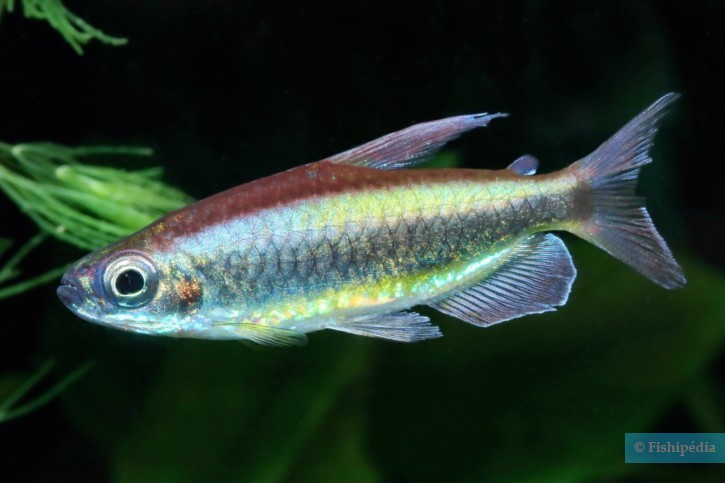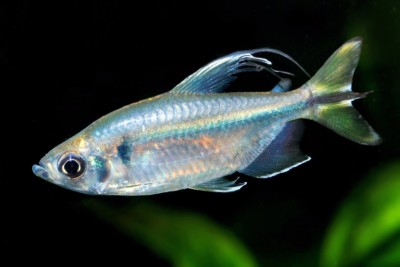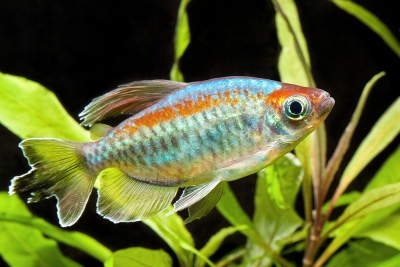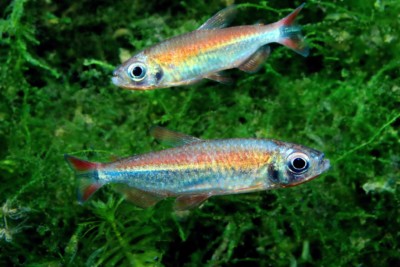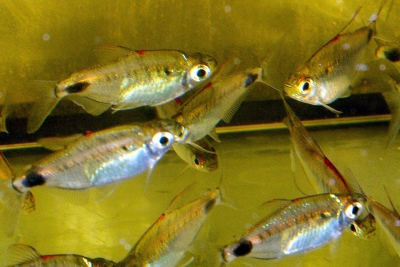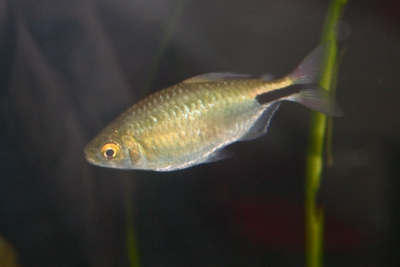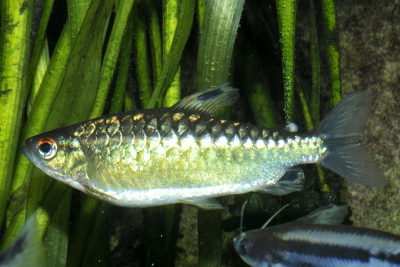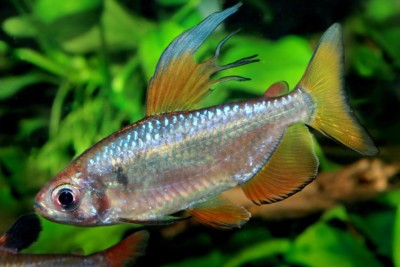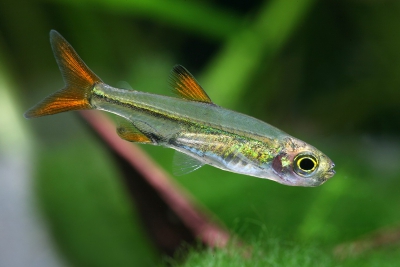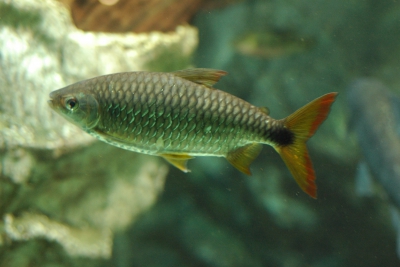Phenacogrammus aurantiacus
| Scientific name | Phenacogrammus aurantiacus |
|---|---|
| Descriptor | Pellegrin |
| Year of description | 1930 |
| IUCN category (World) | LC |
| Family | Alestidae |
| Genus | Phenacogrammus |
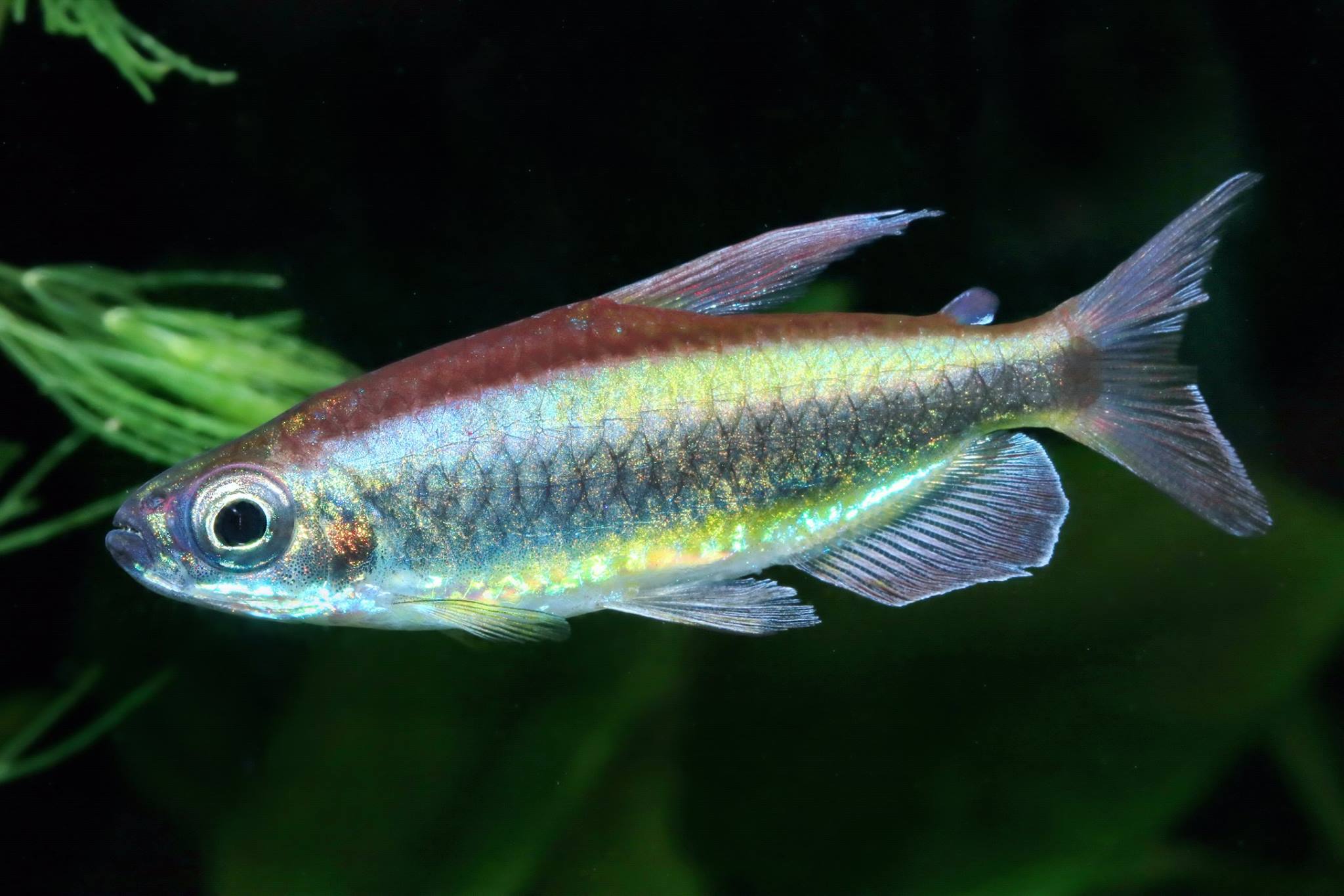

Introduction
Phenacogrammus aurantiacus is a fresh water fish from the Africa.
This sheet is currently being prepared. The texts currently proposed come from our data model or are being drafted. To request priority for this content, you can write to us HERE.
Who is it?
Morphology
-
Average size5 cm
-
Maximum size10 cm
-
Patternhorizontal stripes
-
Average size5 cm
-
Maximum size10 cm
-
Patternhorizontal stripes
How to recognize This fish ?
Phenacogrammus aurantiacus measures around 5 cm. The dominant males can however reach 10 cm. This fish is multicolore with a predominantly rouge, bleu, argent and beige body. The also has bleu and noir horizontal stripes.
Sexual dimorphism
The adult male is bigger than the female.
Behaviour & Life cycle
-
dietomnivorous with carnivorous tendency
-
Sociabilityliving in shoals
-
territorialNo
-
Way of livingdiurnal
Phenacogrammus aurantiacus is a fish living in shoals naturally found mid-depth and near surface. This species is omnivorous with carnivorous tendency .
Although Phenacogrammus aurantiacus is non-territorial, it is sometimes aggressive towards other species.
Reproduction
-
Reproductionovipare qui pond en eau libre
Phenacogrammus aurantiacus is a fish ovipare qui pond en eau libre.
Harmless species
This species does not represent any particular threats to humans when encountered in its natural environment.
Origin and distribution
Conservation status of populations (IUCN)
What is its habitat?
Natural environment characteristics
-
Temperature23 - 26 °C
-
pH (acidity)6 - 7.5
-
FlowMedium
Biotope presentation
This animal evolves in areas characterized by a strong presence of vegetation (aquatic and marsh plants, decaying organic matter, roots...).
Species of the same biotope
Fishkeeping
Not recommended
We do not recommend keeping this species in an aquarium. It has unpredictable needs which, if not met, generate significant stress, potentially leading to a shorter life expectancy, an interruption of its growth or the development of pathogens.
To go further
Sources & Contributions
Participation & Validation
The Fishipedia team and specialist contributors are committed to providing high-quality content. However, although the information comes from scientific sources or testimonials from specialists, the cards may contain inaccuracies.

Didier Paugy

Benoit Chartrer
Translation
Translation done with the valuable contribution of our translators, who make this information available to a wider audience. We sincerely thank them for their commitment.
Scientific partners
Species of the same family
Same genus
Species of the same biotope
